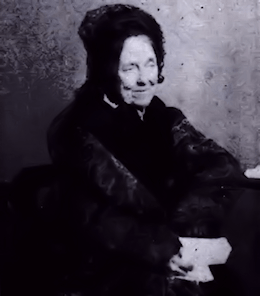Textus Receptus Bibles
Julia E. Smith Translation 1876
| 27:1 | And make the altar acacia wood, five cubits the length, and five cubits the breadth; and the altar shall be quadrated: and three cubits its height |
| 27:2 | And make horns upon its four faces: its horns shall be from it: and spread over it brass. |
| 27:3 | And make pots for its ashes, and its shovels, and its vessels, and its flesh hooks, and its fire pans: and for all its vessels, thou shalt make brass. |
| 27:4 | And make to it a grate a net work of brass; and make upon the net four four brass rings over its four ends. |
| 27:5 | And set it under the border of the altar from below, and the net shall be even to half the altar. |
| 27:6 | And make bars for the altar, bars of acacia wood, and spread them over with brass. |
| 27:7 | And bring the bars into the rings, and the bars shall be upon the two ribs of the altar, in lifting it up. |
| 27:8 | Hollow with boards shalt thou make it: as was seen to thee in the mountain, so shall they make. |
| 27:9 | And make an enclosure to the tent: for the side south of the right hand, curtains for the enclosure, twisted byssus a hundred of cubits the length, for the one side. |
| 27:10 | And twenty pillars and their twenty brass bases: the pegs of the pillars and their joinings of silver. |
| 27:11 | And thus for the north side, in length, hangings a hundred the length, and its pillars twenty, and their bases twenty of brass: the pegs of the pillars and their joinings of silver. |
| 27:12 | And the breadth of the enclosure for the side of the sea, hangings fifty cubits: their pillars twenty and their bases twenty. |
| 27:13 | And the breadth of the enclosure for the east side from the rising, fifty cubits |
| 27:14 | And fifteen cubits the hangings for the shoulder: their pillars three, and their bases three. |
| 27:15 | And the second shoulder fifteen the hangings; their pillars three, and their bases three. |
| 27:16 | And for the gate, of the enclosure a covering twenty cubits, cerulean purple, and red purple, and double scarlet, and twisted byssus, a variegated work: their pillars four, and their bases four. |
| 27:17 | All the pillars of the enclosure round about, joined with silver: and their pegs of silver, and their bases of brass. |
| 27:18 | The length of the enclosure a hundred by cubits, and the breadth, fifty by fifty, and the height five cubits of twisted byssus, and the bases brass. |
| 27:19 | For all the vessels of the tent in all its work, and all its pegs, and all the pegs of the enclosure, brass. |
| 27:20 | And thou shalt command the sons of Israel, and they shall take to thee pure olive oil, beaten for the light, to lift up the light continually. |
| 27:21 | In the tent of appointment from without the vail, which is over the testimony, Aaron shall arrange it, and his sons, from evening to morning, before Jehovah: a law forever for their generations for the sons of Israel. |

Julia E. Smith Translation 1876
The Julia Evelina Smith Parker Translation is considered the first complete translation of the Bible into English by a woman. The Bible was titled The Holy Bible: Containing the Old and New Testaments; Translated Literally from the Original Tongues, and was published in 1876.
Julia Smith, of Glastonbury, Connecticut had a working knowledge of Latin, Greek and Hebrew. Her father had been a Congregationalist minister before he became a lawyer. Having read the Bible in its original languages, she set about creating her own translation, which she completed in 1855, after a number of drafts. The work is a strictly literal rendering, always translating a Greek or Hebrew word with the same word wherever possible. Smith accomplished this work on her own in the span of eight years (1847 to 1855). She had sought out no help in the venture, even writing, "I do not see that anybody can know more about it than I do." Smith's insistence on complete literalness, plus an effort to translate each original word with the same English word, combined with an odd notion of Hebrew tenses (often translating the Hebrew imperfect tense with the English future) results in a translation that is mechanical and often nonsensical. However, such a translation if overly literal might be valuable to consult in checking the meaning of some individual verse. One notable feature of this translation was the prominent use of the Divine Name, Jehovah, throughout the Old Testament of this Bible version.
In 1876, at 84 years of age some 21 years after completing her work, she finally sought publication. The publication costs ($4,000) were personally funded by Julia and her sister Abby Smith. The 1,000 copies printed were offered for $2.50 each, but her household auction in 1884 sold about 50 remaining copies.
The translation fell into obscurity as it was for the most part too literal and lacked any flow. For example, Jer. 22:23 was given as follows: "Thou dwelling in Lebanon, building as nest in the cedars, how being compassionated in pangs coming to thee the pain as in her bringing forth." However, the translation was the only Contemporary English translation out of the original languages available to English readers until the publication of The British Revised Version in 1881-1894.(The New testament was published in 1881, the Old in 1884, and the Apocrypha in 1894.) This makes it an invaluable Bible for its period.